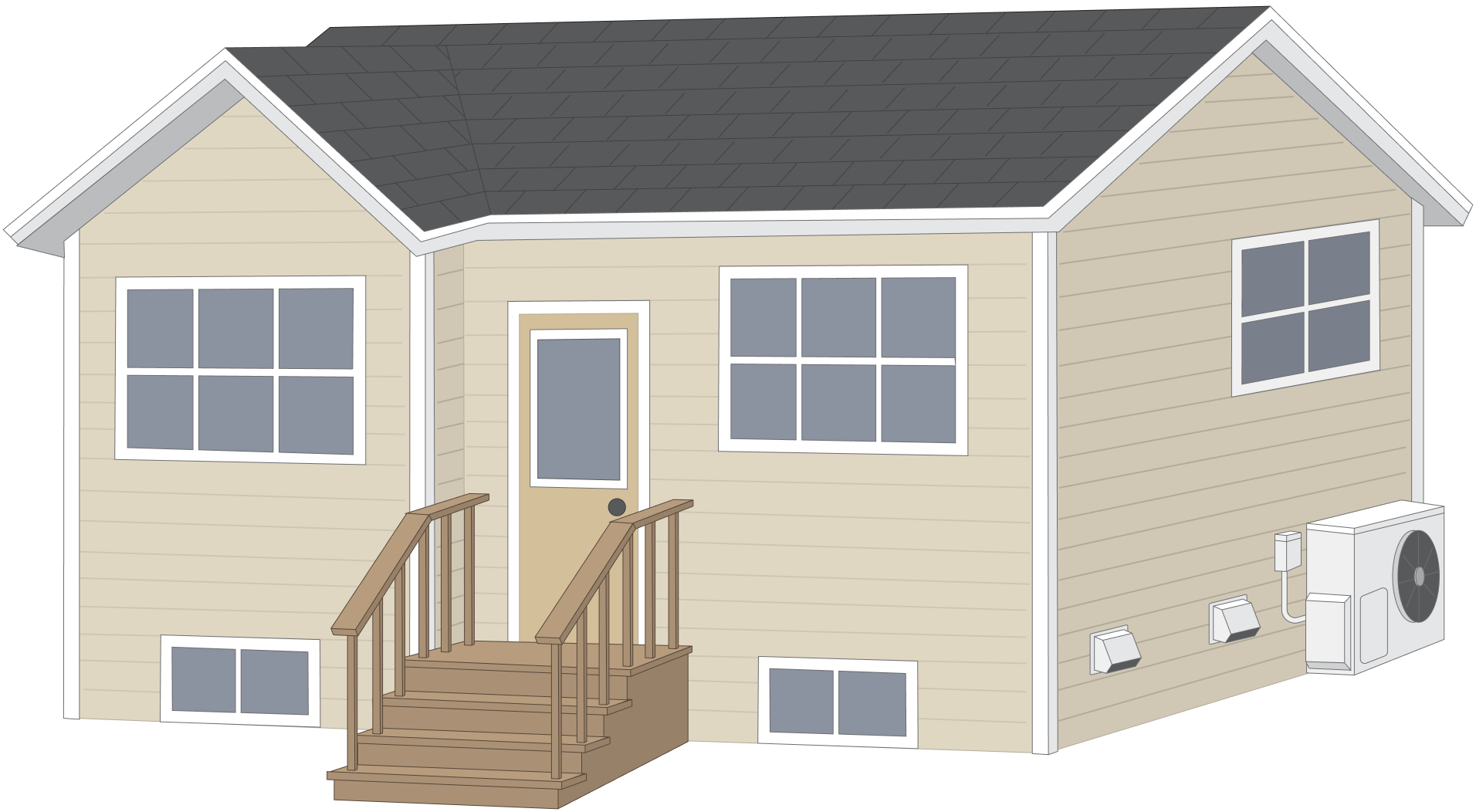Understanding Your Home’s Heat Loss
The more we understand how our homes use energy, the better we can manage it. Use this tool to explore how the conditions outdoors can affect the energy use of an electrically heated home.
To get started, enter your home’s square footage. Then, adjust the values and watch the diagram change to reflect warm areas (red) and potential heat loss concerns (blue), as well as an estimation of how heat loss could affect your electricity bills.
sq ft (per level)
levels

About $0/day in heat loss
Explore the tip spots within the diagram for ideas on managing your home’s energy use.
- In winter, close curtains and blinds to help keep the heat in. Proper fitting window coverings trap air between the glass and covering, acting like added insulation. Be sure to monitor to make sure there isn’t too much condensation forming on the window. On sunny winter days open curtain wide to let the sun shine in.
- When replacing windows, ensure you install ENERGY STAR® windows.
- Air sealing your home can save you energy and money – and it keeps you cozy when outdoor temperatures drop. Draft-proof your doors, windows, outlets, and anywhere there may be heat loss. Plus, you can get back up to $500* with a takeCHARGE rebate.
- Run the HRV on low speed normally, switching to high speed when humidity or odor levels need it.
- Clean HRV filters and core at least twice a year to boost airflow and efficiency.
- Check outside vents in December (after the leaves have fallen) to make sure there’s no debris blocking air flow.
- If your HRV needs to be replaced, ensure you get one installed by a certified installer. Eligible efficient models can get you a takeCHARGE rebate of $225*!
- A heat pump is the most efficient form of home heating. If you already have one:
- Ensure your heat pump is set to “heat” mode and not “auto” mode to prevent it from going back and forth from heating and cooling.
- Clean the filters on the indoor units at least monthly and keep the outside unit free of snow, ice, and debris.
- Set any baseboard heaters at least 2–3 degrees lower than your heat pump setting to avoid both systems turning on at the same time. You want the heat pump to supply as much of your homes heating as possible, with baseboards helping out when necessary.
- If you don’t have a heat pump, consider setting back the temperature on your thermostats overnight or when you are not at home. You can save up to 2% for every degree Celsius you set it back.
- A properly insulated home should have about 16 inches of attic insulation to reach building code requirements of R-50.
- Proper insulation can save you hundreds of dollars a year in heating costs.
- If you’re topping yours up, you could also get back up to 75%* of your costs with takeCHARGE rebates.
- Building code suggests basement walls should be insulated to at least R-18.
- Proper insulation can save you hundreds of dollars a year in heating costs. If you’re adding insulation, you could also get back up to 75%* of your costs with takeCHARGE rebates.
- If you have a central heating system with ductwork running through uninsulated areas (like a crawl space), ensure the ducts are properly insulated. Doing so will save you energy and money – plus you could get a takeCHARGE rebate of up to $500*!
- Besides space heating, water heating is the second biggest driver of electricity use in most homes.
- In winter, water enters your tank at a colder temperature, requiring more energy to heat it up.
- There are lots of ways to limit your hot water usage where you can: washing clothes in cold water, taking short showers instead of baths, running your dishwasher only when full, and ensuring there are no leaks in your taps.
- Installing a high-efficiency showerhead or faucet aerators on your bathroom and kitchen taps will also help save energy. Look for a showerhead or aerators with a flow rate of 1.6 gallons per minute or less.
About these calculations:
- The wind speed slider represents the average monthly wind speed (km/h) that is blowing directly on the home, with little or no wind blocks (such as trees or neighbouring homes).
- The temperature inside the home is modelled at 20°C.
- The Heat Loss estimate applies to space heating only and does not account for other electricity use.
- Air tightness and leakage can vary a lot from home to home. The estimates assume a modest level of air leakage caused by wind.








